The Cornell Lab Bird Academy › Discussion Groups › Nature Journaling and Field Sketching › Focusing on Your Subject – Blind Contour Drawing
-
Not moving my eyes away from the subject was difficult. I did find if I was able to glance to the paper a bit I did better but I know thst is not the point. I'm wondering how I can improve. Slow down? Practice? The newt I drew did not attach correctly in the end and ended up headless. The Bird of Paradise flower was very primitive, the othet two were better but not by much.
-
This was an *interesting* exercise. Of my nine blind counter drawings, the Eastern Red-spotted Newt most resembled the photo while the other drawings (four Green-tailed Sunbird, two Bird of Paradise and two Springbok) were each similar to themselves but not so much to their photos. (Consistency between same items, but not to the originals!) On the final drawing (of the second Springbok) I experimented with a different hold for the pencil. Rather than holding like I was writing, with the pencil on an angle, I held it more upright and with a loose grasp. This change had a positive impact, with the looser grasp letting the pencil flow more easily. The body was 'okay' though the head is still funky, to say the least! Overall, a fun exercise, as I took Liz's words to heart and didn't mind the outcome but rather focused on the process. In reflecting, my attention seems stronger, however, when I am able to look at the paper because I can compare the drawing with the object and make both mental and actual changes, thus cementing my concentration. With that said, I have yet to try this outdoors, and perhaps my blind contour drawing concentration will be more intent in the field, just because it *is* in the field and not an exercise done in the comfort of my home. Am curious to see if this proves true!
-
Since it is winter in my area, there are very few plants other above ground. I chose an garden art object to do an contour drawing. Again it was not an easy sketch, but fun to do.


-
Working through this lesson, made me realize that I could use more practice in eye/hand coordination. What was interesting was that after I worked with a pencil and then ink that using both tools my sketches seem to have the same distortions. I could tell that the sketches did resemble the provided photos.

-

-
It wasn’t pretty. I didn’t go outside to complete the assignment because of the snow and cold but did draw from leaves I had. It was easier because I was holding it and could sort of see a little out of the corner of my eye. I need lots more practice with this.
-
I really enjoyed doing this from a photo. I liked starting with the curvy newt. That gave me a sense of rhythm. Doing a contour drawing from an object with foreshortening and a lot of light and shadow was harder, but it’s such a great warmup to really see the shapes.

-
I like Prof. Fuller's suggestions to 'wanna be' field journalists and I will certainly find them useful. I will try to share more of the work I did PRE CORNELL & Fuller and hope she & others will give me the constructive criticism [which will be welcomed],but if I can get some my before and after work in the portfolio I'd appreciate an 'atta girl' if you all think its deserved.
-
Contour drawing was almost like becoming one with the object. It created interesting curves if not complete pictures.
-
I had computer resistance to loading my drawings, so I will just talk about them. Difficult. The good things that I did: I got all the elements in terms of the right # of lobes on Columbine leaves. However, the beginning points, which were meant to be in the same place as the ending points, never met. My sense of proportion seems to change the closer I get to the ending point. Next time I will succeed at downloading my drawings.
-
This was fun as I had no expectations of the outcomes; no pressure. It helped me stay focused on my subject, but I was also trying to remember my placement on the page (muscle memory), which was distracting from the subject.



-
This was tough! I didn't succeed in connecting the start and end points in any of the drawings, and I was very challenged in my attempts to capture the width of the objects. But I recognize one or two elements in each drawing, and I see small improvements from one sketch to the next, so I am encouraged to keep practicing.

-
 I was surprised that I got better as I tried drawing more subjects. Did I concentrate better or did I learn to judge where my hand was on the paper? Interesting! In all of my sketches, I finish lower on the paper than where I started; I never finished higher on the page. I wonder why? Someone else commented ( and I agree) that this would be a good warm-up activity before sketching.
I was surprised that I got better as I tried drawing more subjects. Did I concentrate better or did I learn to judge where my hand was on the paper? Interesting! In all of my sketches, I finish lower on the paper than where I started; I never finished higher on the page. I wonder why? Someone else commented ( and I agree) that this would be a good warm-up activity before sketching. -
I must say that it was not easy and it made me stay focused. Also, I caught myself almost drifting to see my progress, but I restrained myself. Haha


-
 It was great to not worry about the product (vraisemblance) and to focus on the thing itself. I can see how this would connect hand-eye-brain-heart coordination. I also enjoyed the invitation to look for positives. Where did I actually slow down enough to record a line well?
It was great to not worry about the product (vraisemblance) and to focus on the thing itself. I can see how this would connect hand-eye-brain-heart coordination. I also enjoyed the invitation to look for positives. Where did I actually slow down enough to record a line well? -
wow, that looks like mine!!!😂
-
-
This wasn't easy. The best thing about this exercise - again is to help me become more observant.
-

-

-
 This was an interesting exercise and I enjoyed reading and seeing others posts.
This was an interesting exercise and I enjoyed reading and seeing others posts. -
Countour drawing - This is very fun(ny). In each attempt, I started with big motions, but ended with small lines - so the starting and end points were never very close to each other though several elements weren't too bad. I enjoyed looking for any "this was decent" elements. By the third example, I started intentionally trying to help my arm recalibrate to visual cue (ie., keep going, not big enough, not long enough yet) - that was helping. I am actually quite proud of my tree-barn-silo that followed the initial exercises. Interesting challenge.

-
I felt very relaxed with the contour drawing. Several times I found myself drifting off. It is pleasing to stay focused on the outline rather than fleshing out all the separate parts. I'll upload my photos on the phone.
-

 I never can get back to where I started in blind contour drawings but I do find them helpful in focusing on the subject.
I never can get back to where I started in blind contour drawings but I do find them helpful in focusing on the subject. -
After a busy 9 or 10 days, I'm finally back to class! I had left off trying to do the blind contours, which were squiggly lines at best. Tried again and at least got a little better. I'm not brave enough to share mine! I remember doing this in a junior high art class and it is valuable, so I'll try again as times goes on!
-

-
Kevin, I love your comic! Hilarious
-
Kevin, I see a career as a cartoonist in your future! Cheers, Laurie
-
Funny!! :)
-
Great humour!
-
-
Well that was interesting. The drawings in no way resembled the majority of the pictures. The salamander was close. It did help me focus on the exact area to be drawn instead of the overall. Will have to keep practicing this technique.
-
It was certainly an exercise to aid an older person to 'loosen up' and to remember first the size of my sketch pad . Everything I tried to draw rode off the edge of my pad, but Fuller's reminder to not be too hard on myself and just have fun made me giggle at my work in the end and determine to try to be a better student with any sparks to ones imagination she offers her students.
-
Read More:
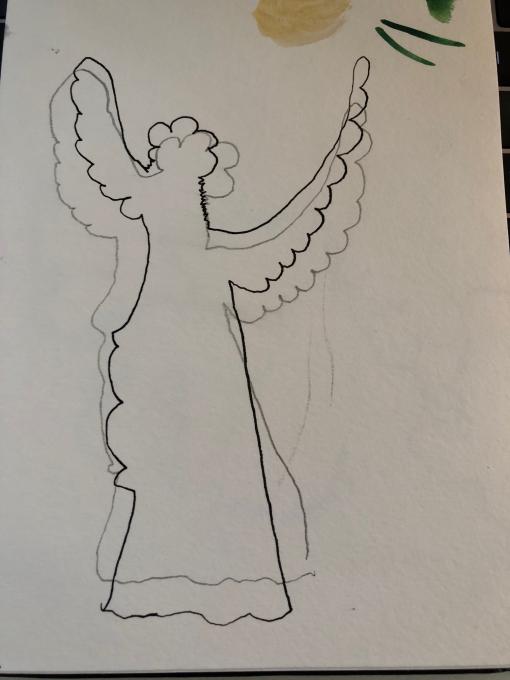
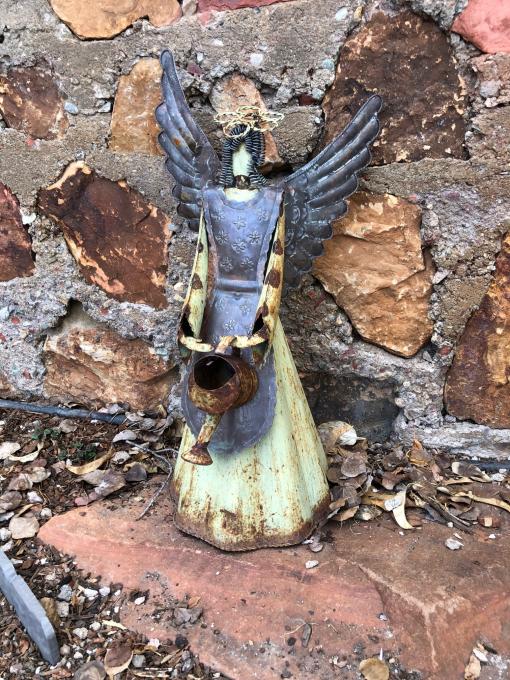


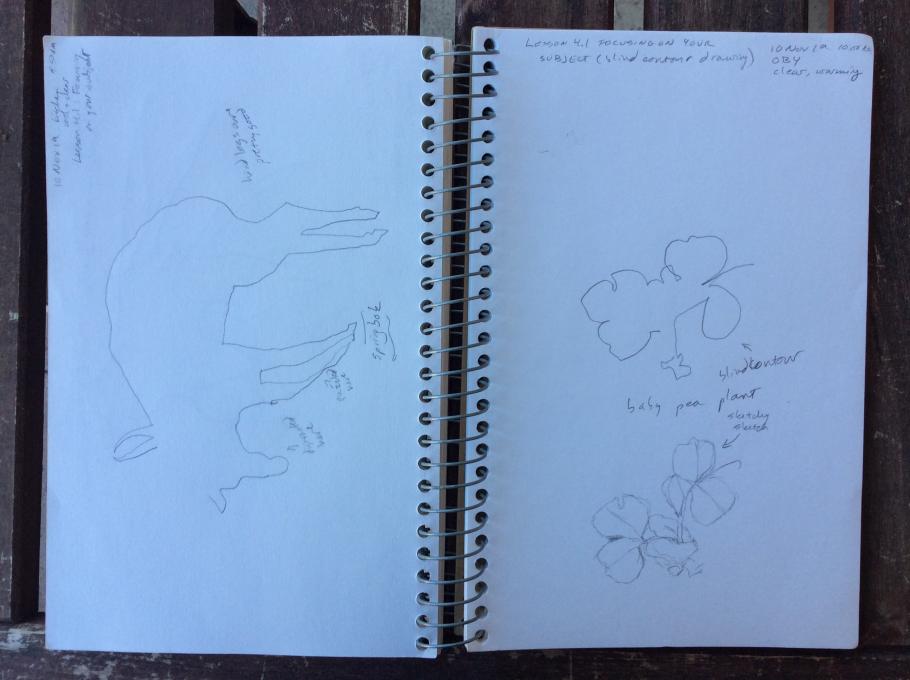

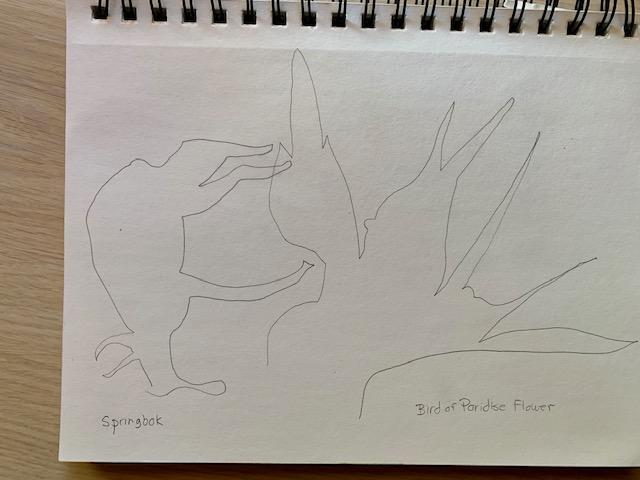

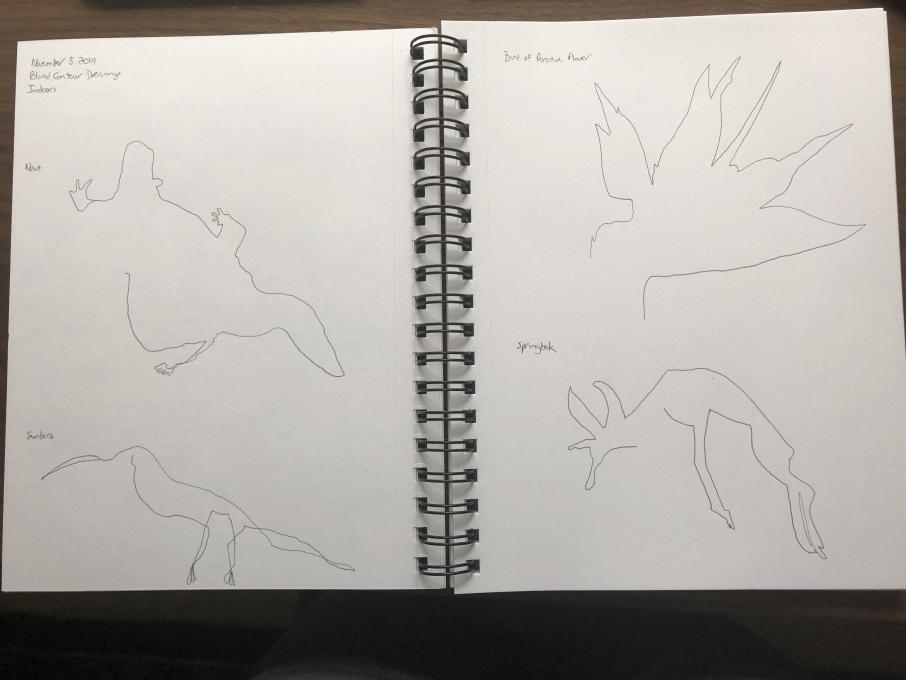
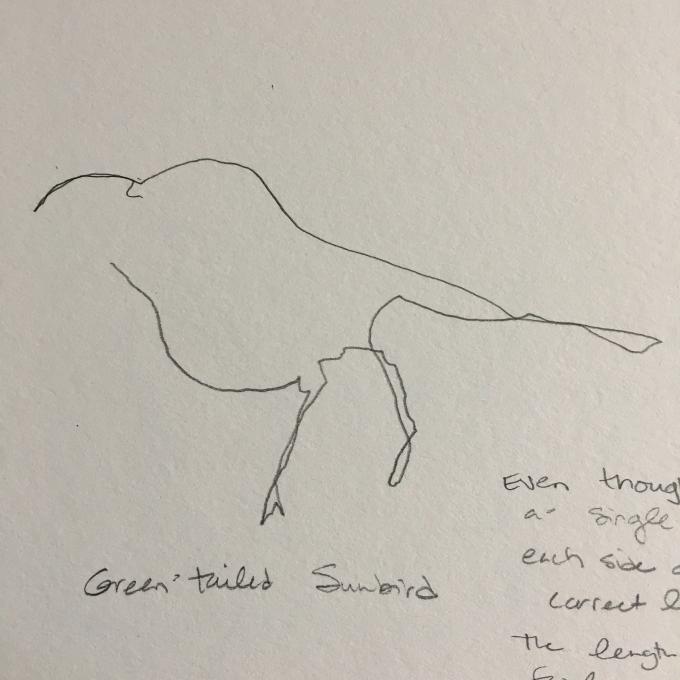 I was surprised that I got better as I tried drawing more subjects. Did I concentrate better or did I learn to judge where my hand was on the paper? Interesting! In all of my sketches, I finish lower on the paper than where I started; I never finished higher on the page. I wonder why? Someone else commented ( and I agree) that this would be a good warm-up activity before sketching.
I was surprised that I got better as I tried drawing more subjects. Did I concentrate better or did I learn to judge where my hand was on the paper? Interesting! In all of my sketches, I finish lower on the paper than where I started; I never finished higher on the page. I wonder why? Someone else commented ( and I agree) that this would be a good warm-up activity before sketching. 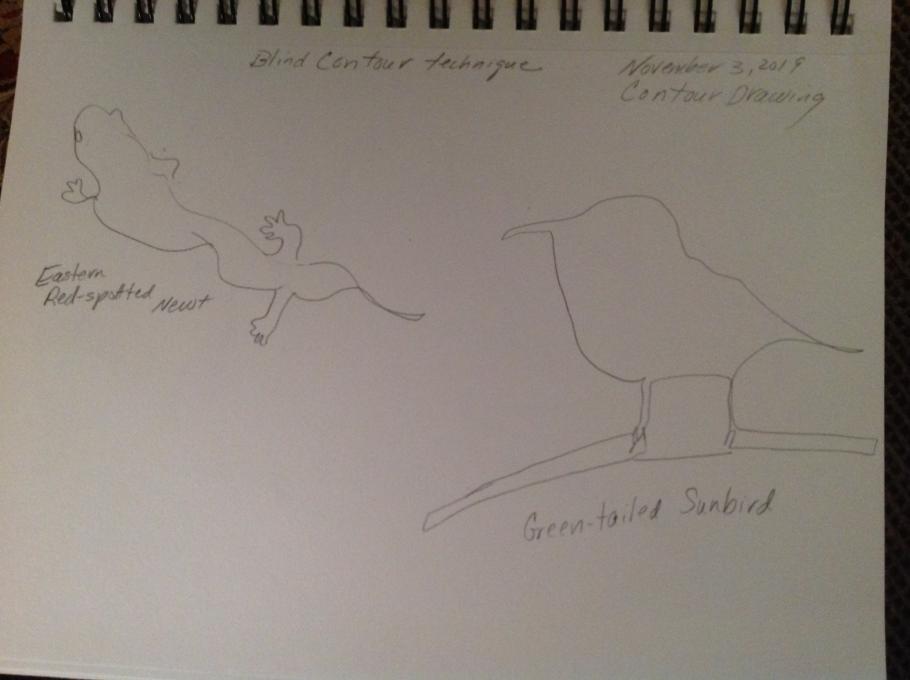
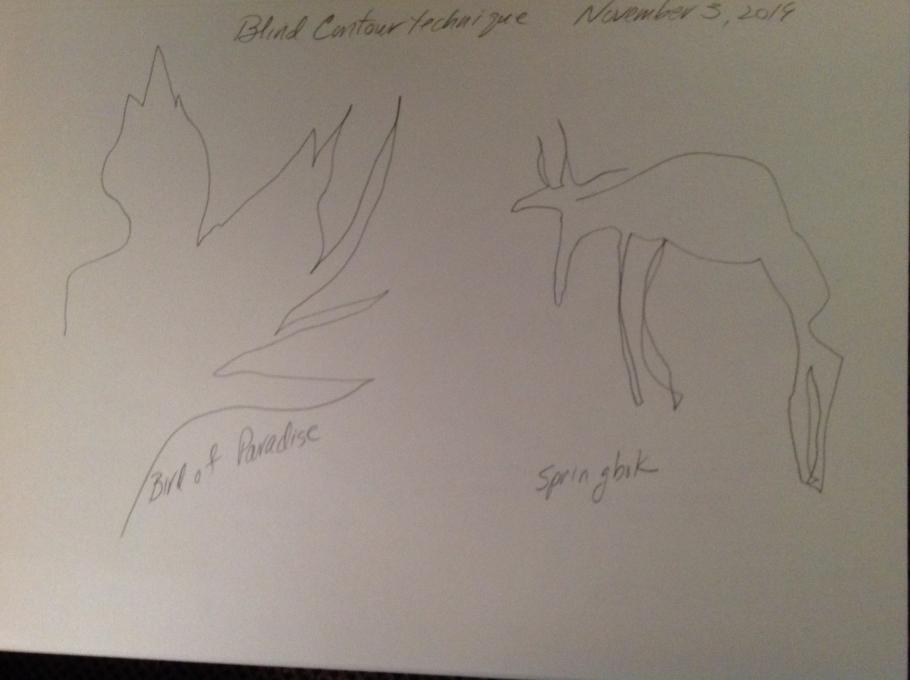
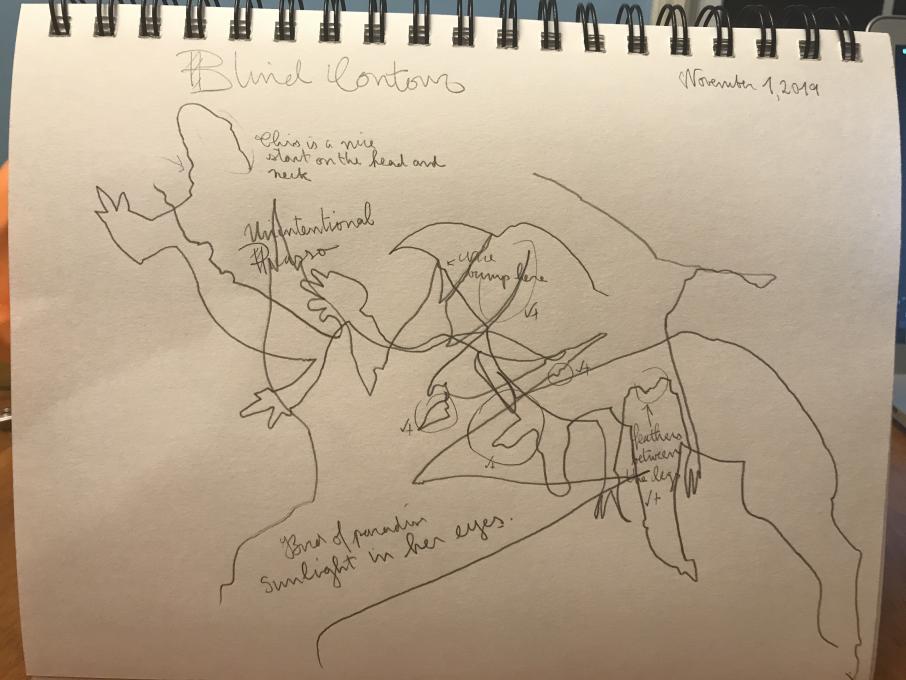 It was great to not worry about the product (vraisemblance) and to focus on the thing itself. I can see how this would connect hand-eye-brain-heart coordination. I also enjoyed the invitation to look for positives. Where did I actually slow down enough to record a line well?
It was great to not worry about the product (vraisemblance) and to focus on the thing itself. I can see how this would connect hand-eye-brain-heart coordination. I also enjoyed the invitation to look for positives. Where did I actually slow down enough to record a line well? 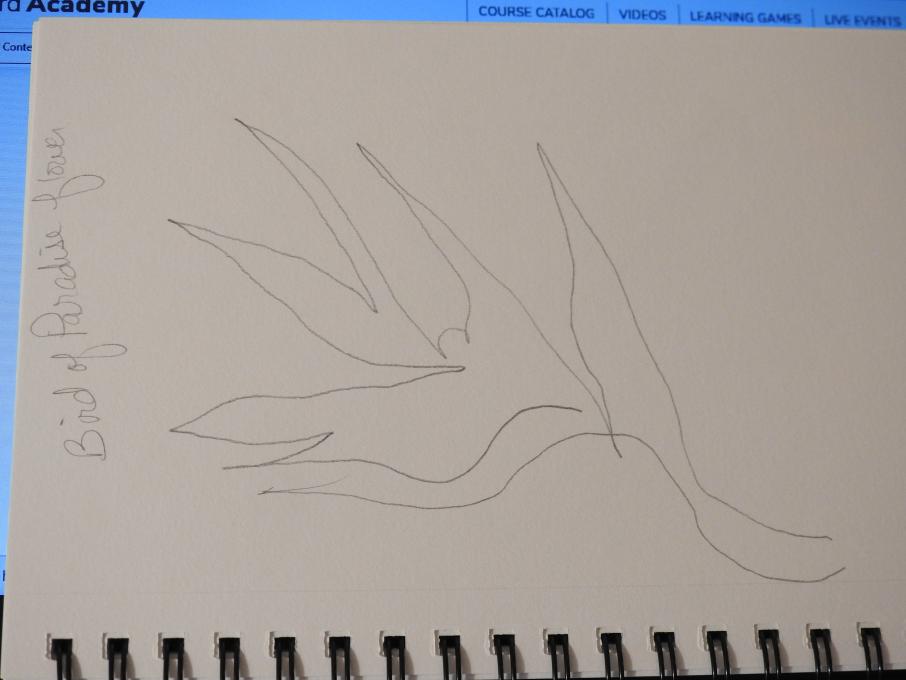
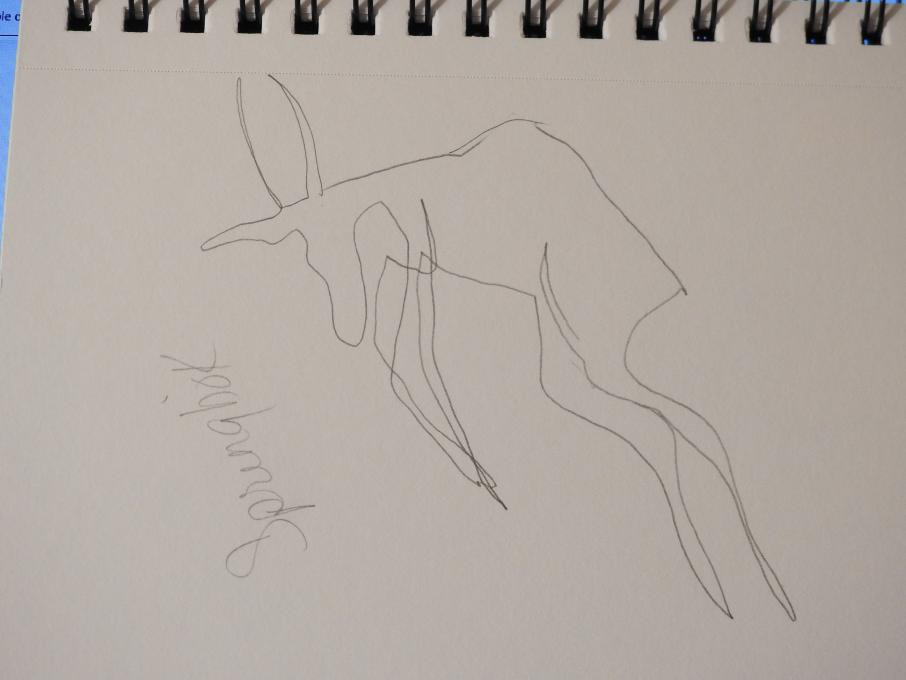
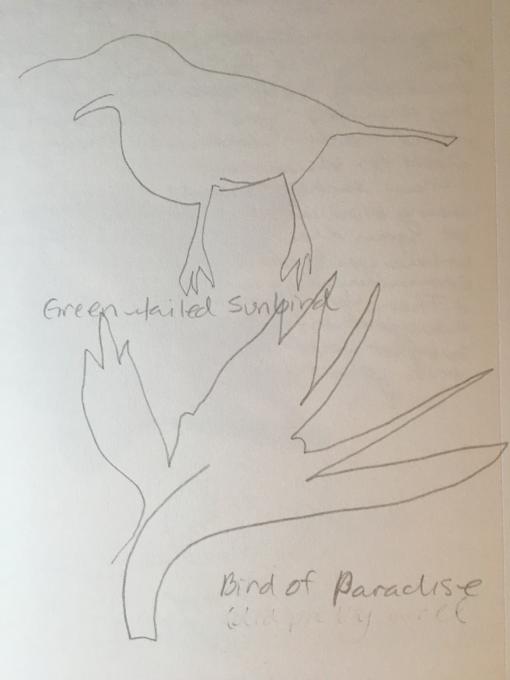 This was an interesting exercise and I enjoyed reading and seeing others posts.
This was an interesting exercise and I enjoyed reading and seeing others posts. 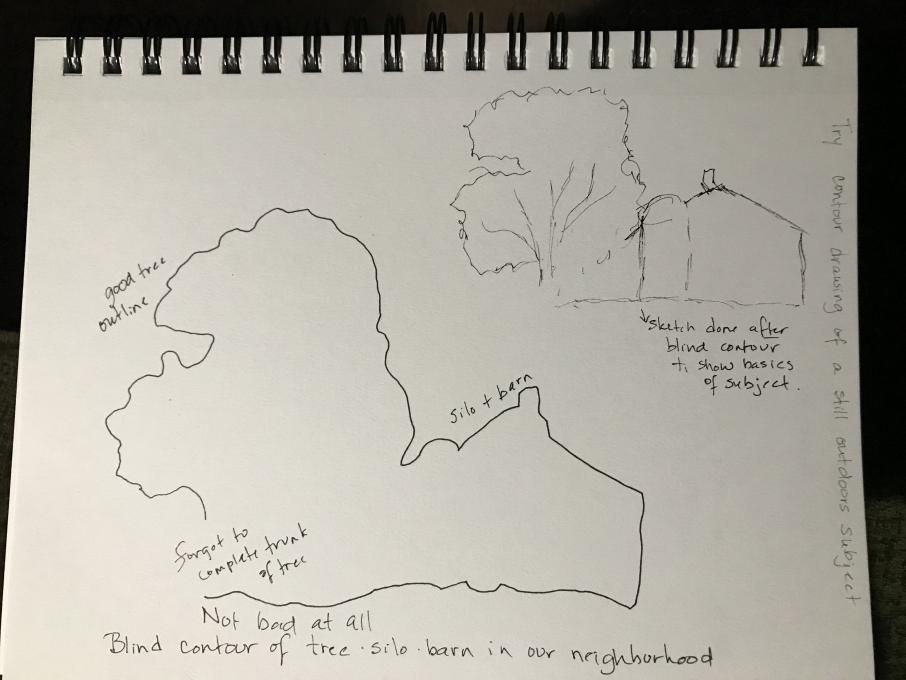

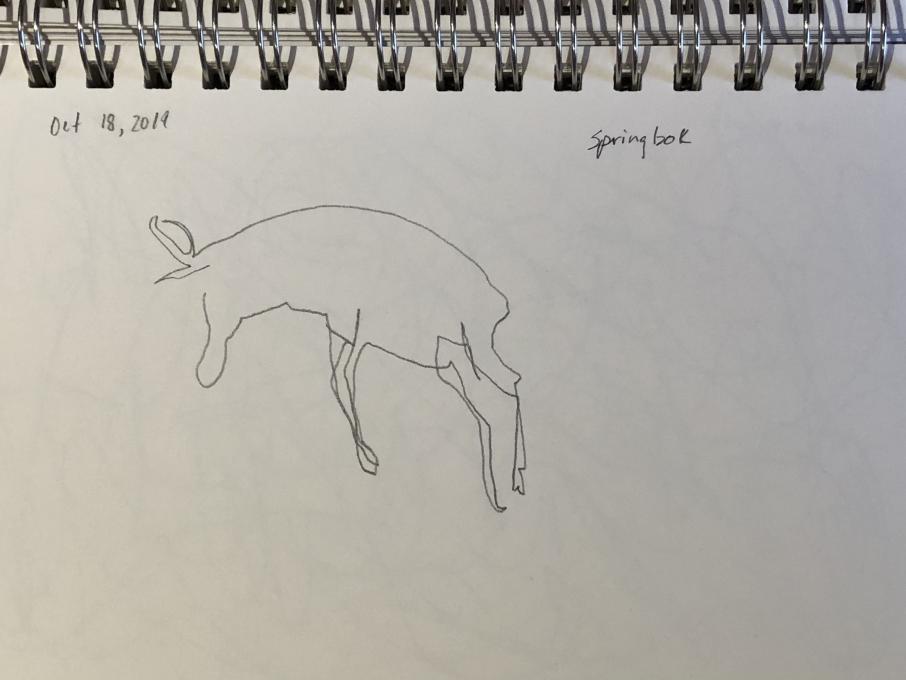 I never can get back to where I started in blind contour drawings but I do find them helpful in focusing on the subject.
I never can get back to where I started in blind contour drawings but I do find them helpful in focusing on the subject. 